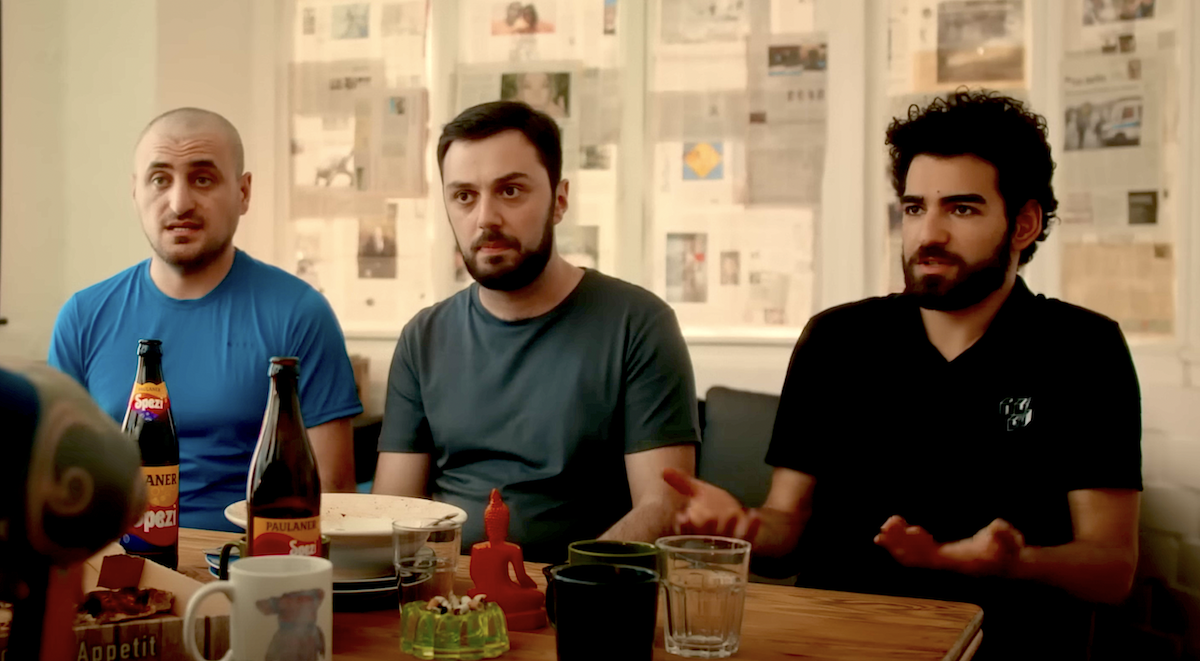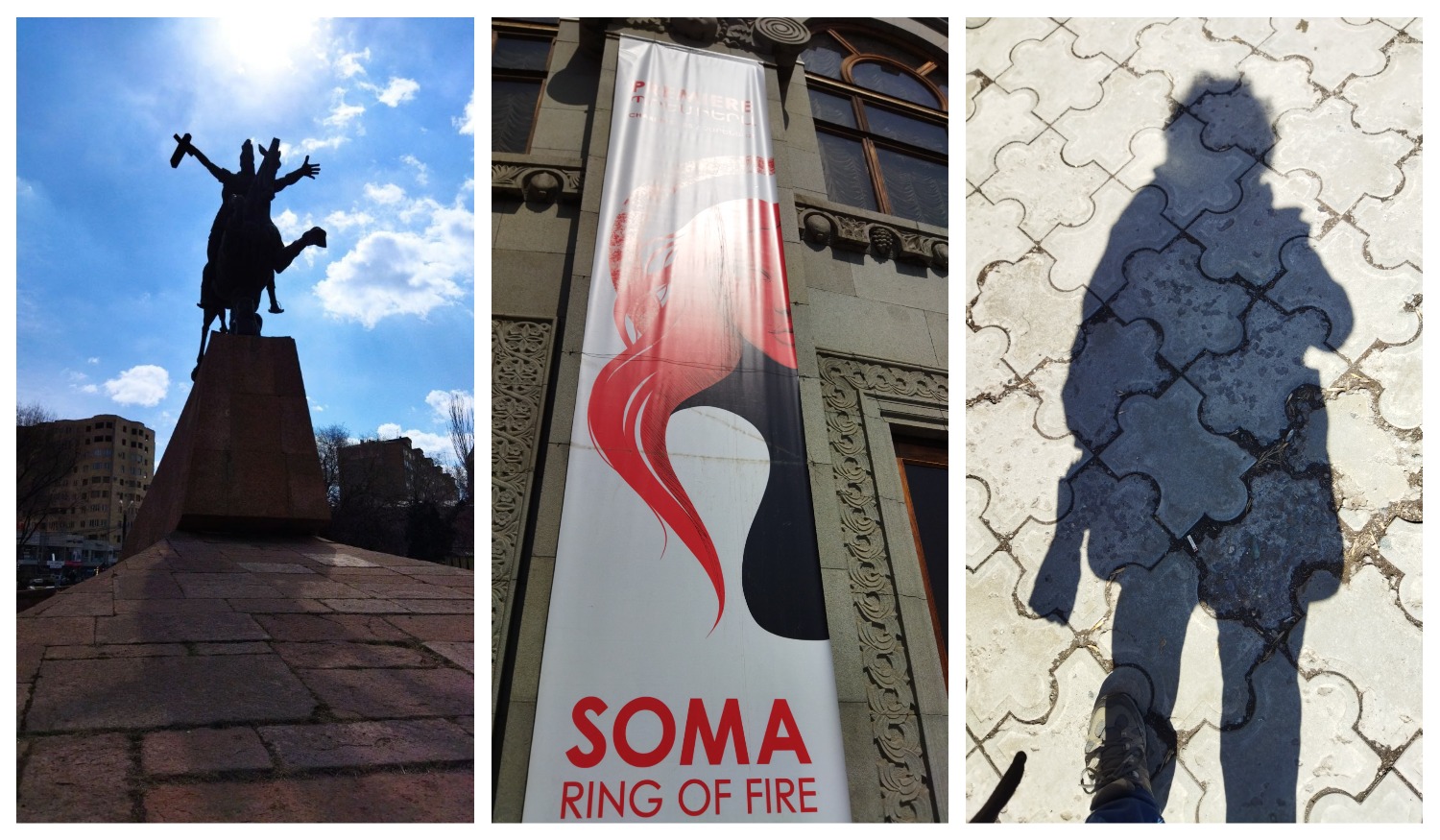"It would be funny if not for the war" - comedy series "Dolma Diaries" in Armenia
Dolma Diaries in Armenia
The web series Dolma Diaries (link at end of article) was created by a group of South Caucasian and German civic activists and media producers to parody stereotypes about “the enemy” in the region, especially in the context of the Karabakh conflict.
Creators from Armenia, Azerbaijan and Georgia have chosen an approach in the form of fictional stories and television humor.
The pilot portrays three men – an Armenian, an Azerbaijani and a Georgian – living in a rented apartment in Berlin. They are in Germany to study, having received a scholarship, one of the prerequisites of which is “coexistence with an enemy.” Find the story of the idea and filming of the pilot episode below:
The authors say they didn’t limit comments, as this is both a good opportunity to explore public opinion and a guide for the future of the series.
Among the more than 1,500 comments there are few negative. In general, people responded to good humor and the spread of peaceful ideas.
This article is a review of the discussion that took place after a group viewing in Yerevan of the pilot episode of “Dolma Diaries”.
The discussion began even before the thing was shown. The subject of the dispute was the very word “dolma” in the title. Many participants said that this is a Turkish word meaning “stuffed” and is not related to the Armenian word “tolma”, which means “grape leaf”.
After the first small battle, the actual discussion began.
Stereotypes are exaggerated
The stereotypes Armenian, Azerbaijani and Georgian youth allegedly have are greatly exaggerated in the show, 27-year-old manager Knarik Baghdasaryan says:
“Armen, an Armenian who went to study in Germany, says that he loves his homeland very much but in Europe he feels freer because he can meet with girls he likes, and not with the “daughter of a close friend of the pope.” Such a picture of lack of freedom in Armenia is not only outdated, but does not reflect reality in any way.
Of course, we are talking about a humorous series, but we must also take into account that its target audience is Europeans, who may form a misconception about Caucasian peoples and their value system.”
Good humor
But when it comes to humor, then this series is very successful, Baghdasaryan goes on:
“The series well shows the perceptions of each other among Caucasians. These are narratives created by no one knows who, where and how, when the first and even the only determining factor in the formation of an idea about a person is his nationality. This incomplete, inadequate perception of each other greatly hinders the formation of opportunities for dialogue in the region.”
Inappropriate humor
Biologist Saribek Mirzoyan, 33, a native of Hadrut, presented himself as a soldier in the 2020 44-day war. He did not like the show’s angle. Saribek believes that the story completely distorts reality and the authors are trying in vain to present the most painful problem for both peoples through humor.
“For people like me, who have lost their home, homeland and many relatives because of this conflict, it is simply impossible to look at this attempt to turn our pain into “humor”. Maybe this is possible for those Armenians who do not have an emotional and physical connection with their homeland, but not for me and thousands of people like me,” Saribek says.
Elina Aristakesyan, a 25-year-old social worker, was generally supportive of this approach. She says that she would love to watch a series like that about any other conflict in the world.
“After the war, after thousands of victims, it is extremely difficult for us to consider extremely painful issues, such as border delimitation, in a humorous context I think it’s very dangerous to oversimplify these kinds of questions. When there are border incidents, when people lose their homes, it is impossible to watch with humor the episode where Armenian and Azerbaijani boys share a sofa.
First, the young Armenian declares that he will not give up an inch, calling it his “historical homeland,” then decides to give in and “equally” divide the “disputed territory,” Elina points out.
Dolma Diaries in Armenia
The fixation of Caucasians on their ancient history is well represented
“The authors portrayed one of the main problems in the Armenian-Azerbaijani conflict well. By telling incomprehensible stories about the sixth millennium BC, we mythologize the conflict and make it too distant for people who do not live in this region and are not connected with it on a daily basis. And so our problems are ultimately incomprehensible to the average European.
Meanwhile, this is not a historical, but a political conflict that is happening right now. I think we ourselves must change our attitude towards history, otherwise we will never budge,” 31-year-old historian Narek Hakobyan said.
He regrets that it was not possible to launch the series three years ago, when the second Karabakh war had not yet happened.
Narek Hakobyan thinks that the series would be more valuable if it were based on an already resolved political conflict, after which peoples would have to learn how to live with each other. “And now it will inevitably become another futile attempt at dialogue without a starting point,” he says.
“Coexistence is possible in movies, but not in life”
The coexistence that the show is about is impossible, at least for now, 43-year-old educator Gayane Manukyan says:
“In any other place, but not in our countries. While there was the Soviet Union, for seventy years attempts were made to find ways to reconcile the two peoples. However, experience has shown that this is not possible when the underlying conflict is unresolved.
Of course, there is plenty of evidence that, on an individual level, coexistence and even friendship are possible. But it is clear to me that until the conflict is resolved at the political level, it will always threaten the lives of people, even those who are friends with each other.”
Dolma Diaries in Armenia






















